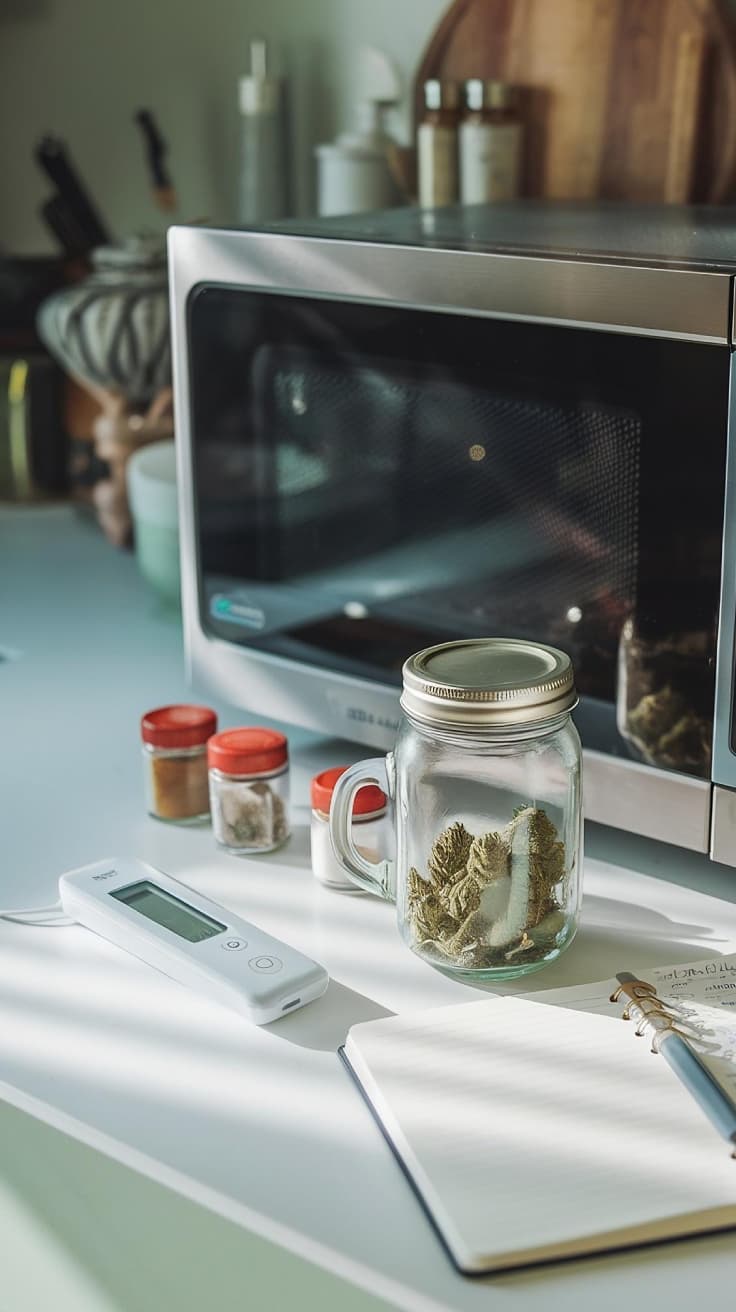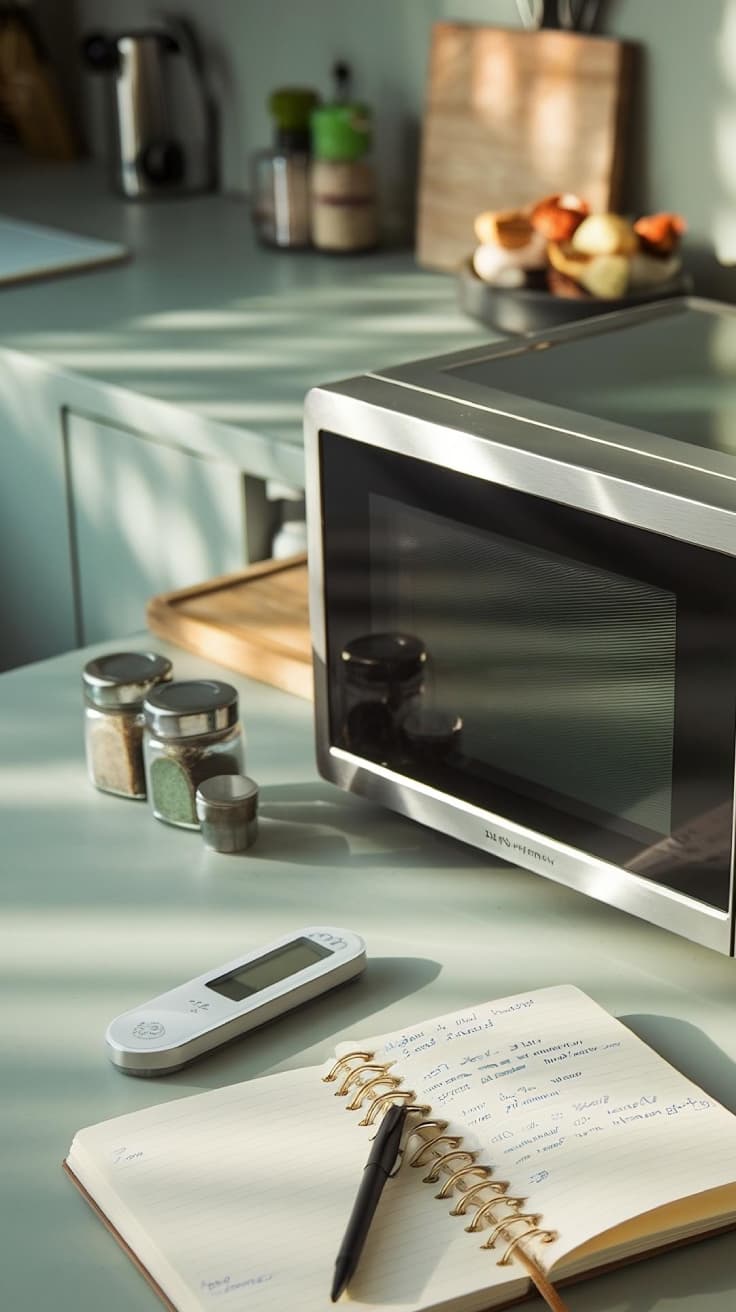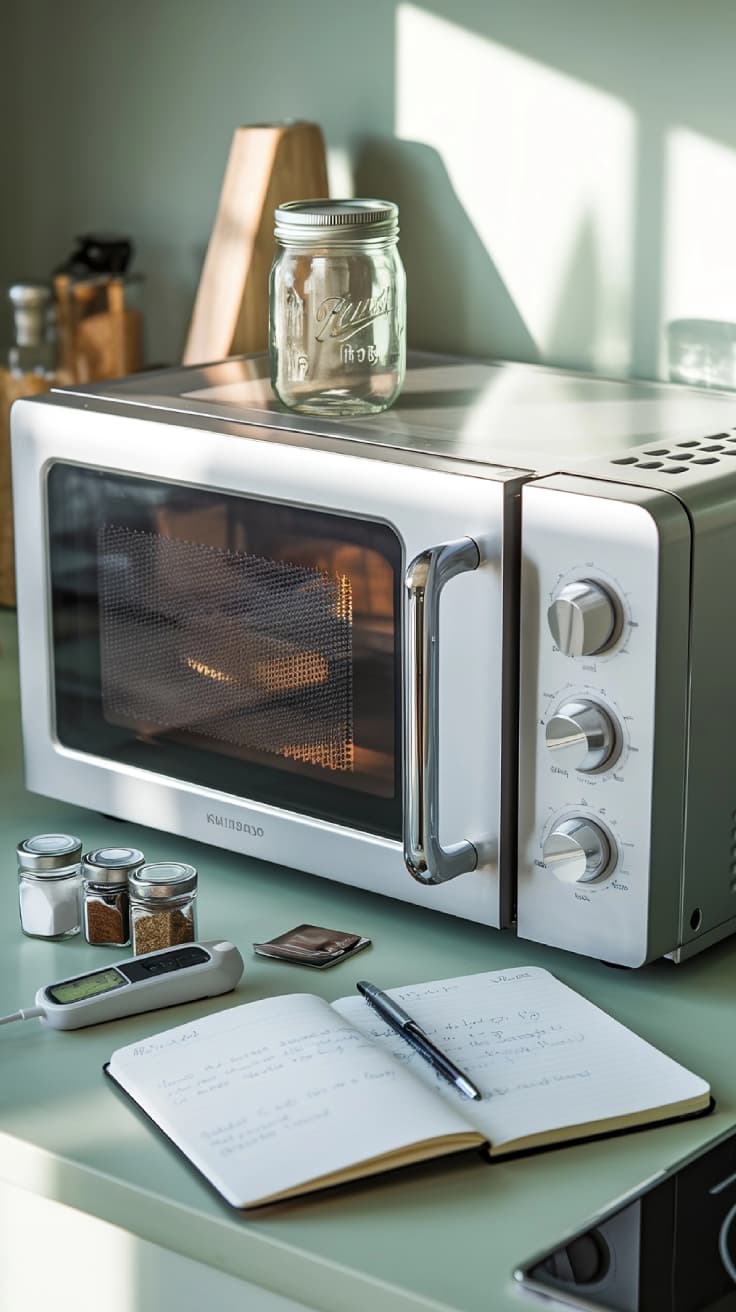Microwave Decarboxylation
When I first started experimenting with cannabis cooking at home, I was armed with only a microwave and a sense of adventure. That’s when I tried microwave decarboxylation. And I have to tell you… it’s a lifesaver!
Let me show you how to do it the easy way!
How to Decarb Using a Microwave

Ingredients:
- Cannabis flower.
Tools:
- Microwave.
- Kitchen Thermometer.
- Parchment paper.
- Microwave-safe container with a lid.
Instructions:
1. Get Your Cannabis Ready: Break up your cannabis into small pieces (but don’t grind it—save that for later). Place it in your microwave-safe container. If you’re using parchment paper, line the bottom first.
2. Set Your Microwave: Start on medium or low power. We’re aiming for a temperature of 220°F to 250°F (105°C to 120°C). Too much heat can scorch your stash, and we definitely don’t want that!
3. Heat in Intervals: Microwave on medium power in 30-second bursts, stirring between each. Repeat for 2–3 minutes, until the cannabis is golden brown and aromatic.
💡 Pro Tip: Check the temp after each round. Too hot? Let it cool for a few seconds before restarting.
4. Cool It Down: Let your decarbed cannabis cool completely before using it. This helps lock in all those lovely cannabinoids.

Tips For Better Decarboxylation Results
Text
- Stir for Even Heat: Stir or shake the cannabis between bursts to ensure all pieces heat evenly and avoid hot spots.
- Watch for the Color Change: Your cannabis is ready when it turns a light golden brown and smells nutty.
- Manage Odor: To reduce the smell, use a container with a lid (but not airtight) and ventilate your kitchen if needed
💡 Pro Tip: Want to know how to decarb your weed in a different way? Here’s my decarbing guide.

Key Considerations
1. You just need a microwave-safe dish and your microwave! No extra stuff or messy cleanup.
2. Microwaving uses less power than baking, which is good for the planet and your wallet!
3. This is much quicker than using the oven or other ways to decarb. Those usually take around 30 minutes to an hour.
Does decarbing weed make edibles stronger?
Yes, decarbing weed makes edibles potent. Without decarbing, edibles may have little to no effect.
Does microwave decarbing make the kitchen smell?
Yes, this method will leave some smell in your kitchen, but much less than the oven. Keep a lid on your container, and you’ll be fine!
Is this as effective as the oven or sous vide?
Not really. The microwave method is all about convenience and speed. For large batches or precision, other methods might work better.
Microwave decarboxylation has saved me more times than I can count, whether I forgot to prep ahead or wanted to try a new recipe on a whim. It’s quick, simple, and perfect for small batches.
If you try this method, let me know how it worked for you—I’d love to hear your stories (and maybe your recipe ideas)!
Happy cooking!
